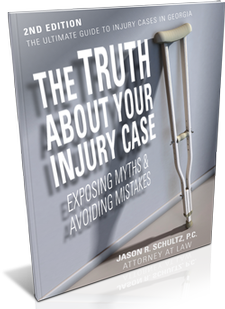Because it can be difficult to properly diagnose the severity of wrist injuries by yourself, it is paramount to see a doctor and undergo X-rays and other diagnostic testing. Mild sprains may heal with rest, ice, compression, and elevation, while moderate sprains or minor fractures typically require splinting. More serious injuries may call for surgery and rehabilitation.
Neck Injuries
Neck injuries can occur when you fall either backward or forward. Either case can result in sprains or strains of the neck, or whiplash.
The symptoms of this type of injury rarely appear immediately, but could begin within 24 hours. In some cases, they do not appear for several weeks. These symptoms include:
- Pain
- Headache
- Pain between the shoulders in the upper back
- Tingling and numbness extending down the arms
- Muscle spasms
Your doctor will need a definitive diagnosis before prescribing treatment, but many neck injuries heal with conservative treatments such as pain medication and ice compresses. Others require intensive physical therapy or immobilization. In rare cases, surgery may be necessary.
Lower Back Injuries
Falling backward prevents many knee or ankle injuries, but can cause other problems, particularly with the lower back, pelvis and tailbone. Strains and sprains, torn ligaments, and even fractured tailbones are common in backward falls. In some cases, a fall can over compress the spine, leading to disc issues, chronic nerve pain, and sciatica.
For most people with lower back injuries after a fall, the only symptoms are pain and swelling, although some also have muscle spasms. Once a doctor has discovered the cause of these symptoms through X-rays and other tests, he will most likely prescribe conservative treatment.
Typically, treatments for lower back injuries include:
- Pain relief
- Muscle relaxers to reduce spasms
- Continued activity, and avoiding extended bed rest
- Cold or hot compresses to reduce swelling
- Physical therapy
- Surgery, if structural damages require repair
Ankle Injuries
In a trip or fall, the ankle can twist awkwardly, stretching or tearing soft tissues, and causing sprains, strains, and contusions. The trip or fall may also fracture surrounding bones.
An ankle sprain, perhaps the most common ankle injury, is a stretch or tear of the ligaments that hold the ankle steady and allow it to move. Falls may also tear tendons or cartilage in the ankle.
Symptoms of an ankle injury include:
- Pain
- Swelling
- Stiffness
- Bruising
- Inability to bear weight
Many minor ankle injuries heal with only rest, ice, compression and elevation. For injuries that limit mobility, however, seeing a doctor is necessary. Many will require only immobilization and avoiding placing weight on the ankle. Other, more severe injuries need surgical repair and rehabilitation. Ankle injuries are slow to heal, and may take six weeks to several months before you can return to your normal activities.
Knee Injuries
The knee joint is made up of bones and cartilage connected by ligaments and tendons that give it a certain range of motion. When a fall forces it outside that range of motion, damage often occurs. This damage can come in many forms, including:
- Fractured kneecap
- Dislocation
- Anterior cruciate ligament (ACL) injuries
- Posterior cruciate ligament injuries
- Collateral ligament injuries
- Meniscal tears
- Tendon tears
Many of these injuries have similar symptoms, including pain, swelling, and stiffness in the knee. Instability or inability to stand are also common. Some people also hear a popping sound as ligaments or tendons tear.
Almost all injuries to the knee require a visit to the doctor or the emergency room. Some injuries heal with bracing, rest, and rehabilitation, while others require surgery to repair the damage.
Bruises and Lacerations
Bruises, lacerations and other skin and soft tissue injuries are among the most common injuries suffered in slips and falls. Bruising occurs from the impact of the fall, or from striking other objects as you fall. Lacerations may occur if you hit a nearby object, or by sliding across a rough surface as you fall.
While some lacerations may require stitches or other medical interventions, most need little more than cleaning with saline or another anti-bacterial rinse and covering with a bandage. The pain and swelling associated with bruising often responds well to rest and ice.


